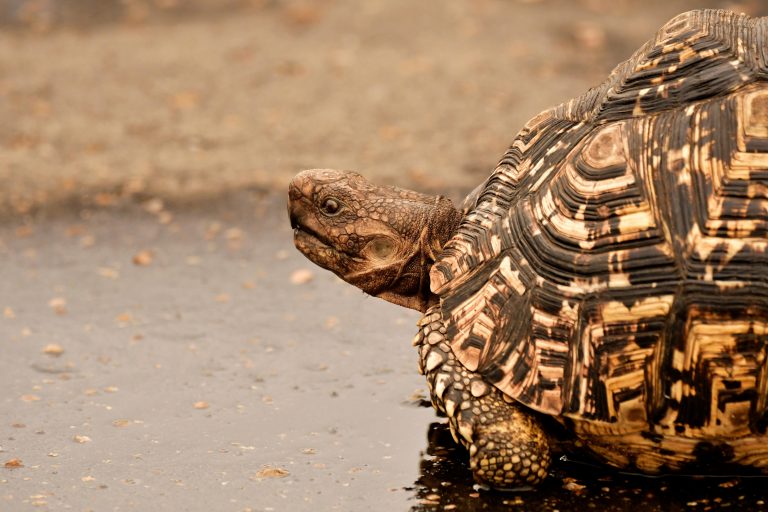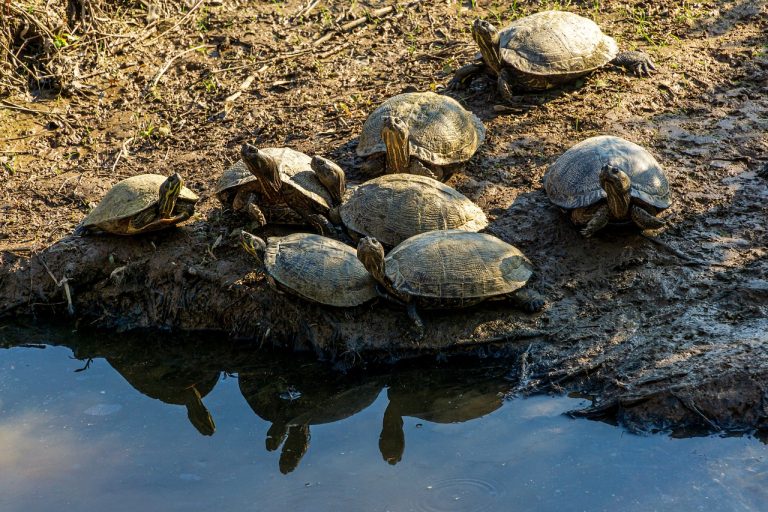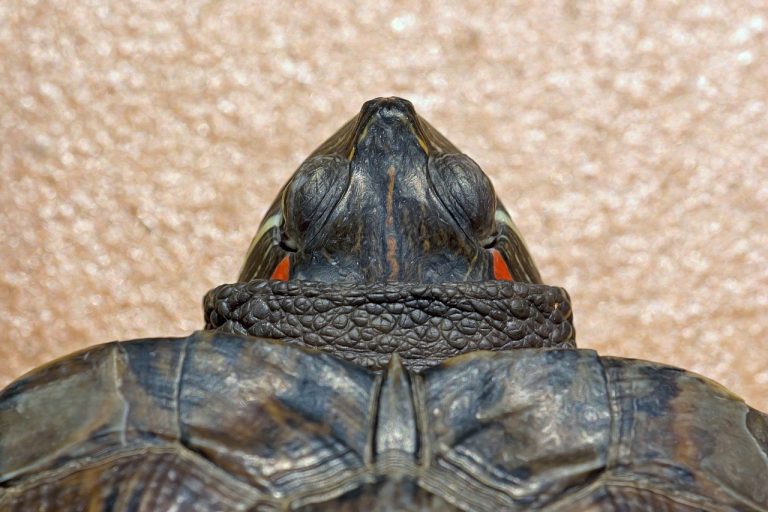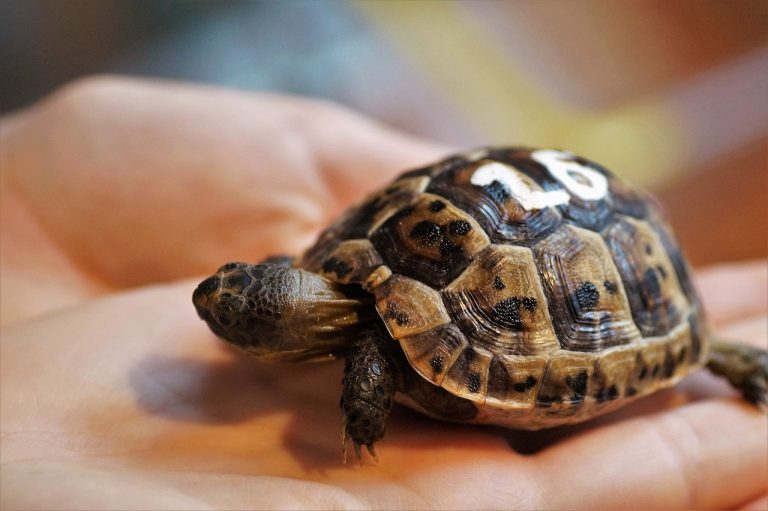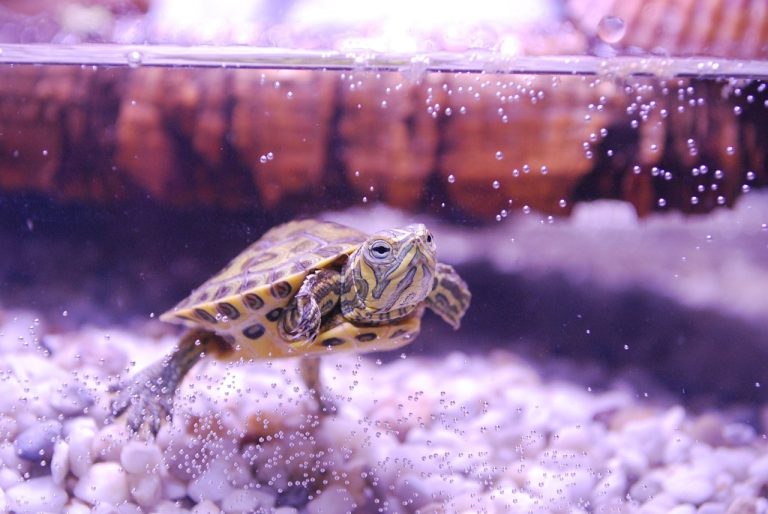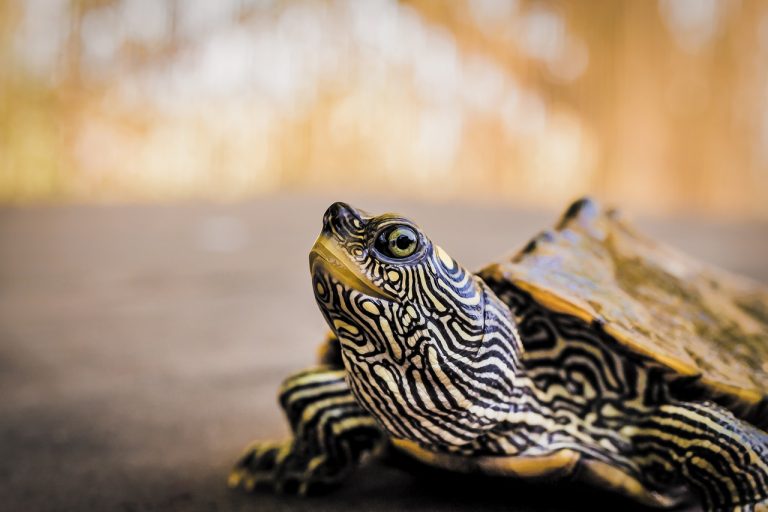Do Turtles Float When They Sleep?
Turtles are captivating creatures, possessing both charm and intricate physical characteristics. Consequently, it’s essential to regularly monitor their behavior with caution. If you keep a turtle in an aquarium or pond, you may have observed it floating on the water’s surface at times. But is this behavior normal? What leads turtles to float?
At times, turtles may float while asleep, using the air in their expanded throats to maintain buoyancy. However, digestive and respiratory issues can also cause turtles to float. Therefore, when turtles are seen floating in the water, it warrants prompt attention and action.
It’s crucial not to dismiss turtles lying on the water surface casually. While it could be as benign as gas or simply napping, it might also indicate a more serious issue like respiratory illness. Let’s delve into the various ways turtles sleep and explore why they have the ability to float.
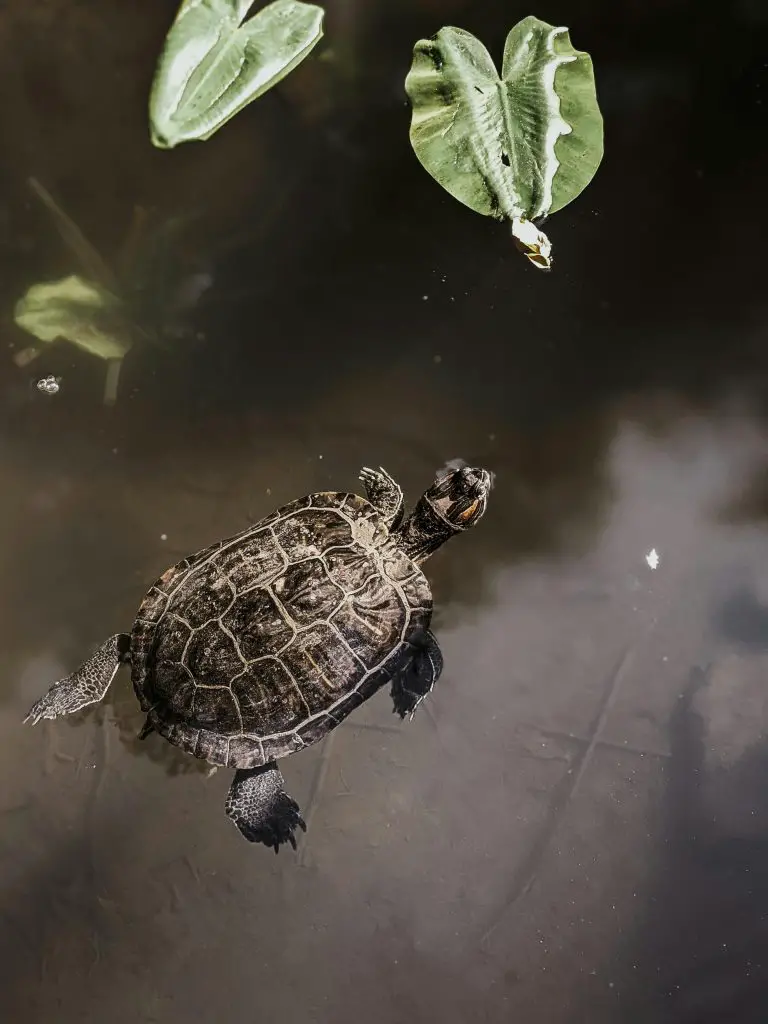
Do Turtles Sleep Floating Or Underwater?
Yes, turtles do have the ability to sleep while floating. Similar to humans, pet turtles will rest wherever they feel most comfortable. This could include floating on the water’s surface, especially if they find it calming and secure.
Turtles have a wide range of sleeping spots, from floating on the water’s surface to basking in their favorite sunning spots, resting at the bottom of their enclosure, or even halfway between these locations.
Regardless of where your turtle chooses to nap, it will need access to air regularly. Certain turtle species, like the red-eared slider and the painted turtle, can hold their breath for up to five hours.
Indeed, turtles have the ability to sleep underwater. This behavior isn’t exclusive to sea turtles; various freshwater turtles, including painted turtles, map turtles, sliders, mud turtles, and musk turtles, spend their nights submerged in water.
On average, turtles sleep underwater for about 4 to 7 hours. They briefly wake up to take a deep breath before returning to their slumber.
When it’s time to sleep, freshwater turtles such as the map turtle often create a cozy nest in damp grass or moss for a restful sleep.
Certain North American turtles, like the musk and painted turtles, possess the remarkable ability to hold their breath underwater while sleeping, undisturbed by the surrounding water.
For underwater respiration, reptiles like the painted turtle and Japanese pond turtle employ specialized rear muscles adapted for cloacal respiration. On the other hand, musk turtles have evolved distinct breathing muscles beneath their necks, enabling them to breathe underwater. This unique breathing method is also utilized by several marine turtle species during bromating.
Ensuring an adequate oxygen supply in the water is paramount for the well-being of turtles. To guarantee that turtles have enough oxygen while they sleep, it’s essential to utilize water filtration or a pump in an appropriately sized aquarium.
Do Turtles Float On Their Back While Sleeping?
It’s unusual for turtles to sleep on their backs in the water. This behavior is atypical, so if you notice your turtle floating on its back for extended periods, it’s advisable to seek veterinary attention.
If your turtle’s behavior and appetite remain normal but it continues to float on its back, there may be issues with water quality or other tank-related problems that need to be addressed.
Insufficient consumption of vitamin A can lead to weakness and illness in turtles. In such cases, they may exhibit lateral movement and even flip onto their backs.
Respiratory illnesses can also affect a turtle’s buoyancy, potentially causing them to flip onto their backs.
Improper habitat setup can pose drowning risks for turtles. To ensure their well-being, a sufficiently large tank allowing for free movement is necessary. Moreover, maintaining an appropriate water level is crucial.
Inadequate water depth in the tank or pond increases the likelihood of turtles flipping over, making it challenging for them to right themselves. Additionally, the presence of aggressive tankmates can contribute to a turtle’s backward flip.
Having multiple turtles in a single tank can result in some of them frequently flipping over. This situation may arise, especially when there is only one female turtle in the tank alongside several males.
During mating season, male turtles can become highly competitive, vying for the attention of the female. This heightened competition may lead to aggressive behavior, with the dominant male often overturning subordinate turtles, including the female.
Do Turtles Float Sideways When They Sleep?
While it’s not uncommon for turtles to float while nodding off, this isn’t a typical resting posture and could indicate a serious health concern.
If your turtle is floating on its side, it may be at risk. Digestive tract issues are common culprits.
Fortunately, this problem often resolves itself when the turtle releases gas. If you’re concerned, you can consult a vet and obtain medications for your turtle.
However, if your turtle is unable to swim and consistently bobs sideways, it could be at risk of drowning. This could signal a severe respiratory illness.
Potential causes include exposure to cold water or an untreated vitamin A imbalance, both of which can increase the risk of pneumonia in your turtle.
Can Sleeping Turtles Drown?
There’s no need to worry about your turtle passing out and drowning while it sleeps, as turtles have the ability to remain submerged for several minutes to hours without needing to breathe.
The turtle will naturally resurface for air when needed; however, if it becomes trapped underwater, it may perish. Ensure the turtle has clear pathways to escape any potential dangers.
Several turtle species utilize their cloacas for breathing. Ensure that the water depth is suitable for hatchling turtles, so they don’t need to swim all the way to the surface to breathe.
To safeguard newborn turtles, maintain water levels approximately halfway up their shells, as recommended by experts.
The key to preventing turtle drowning is to eliminate any potential hazards from their environment.
Which Species Of Turtles Sleep Floating?
There are various subaquatic turtle species, each exhibiting unique sleeping habits.
Many turtles that hibernate underwater also do so on land, seeking refuge in mud, sand, or beneath rocks to evade predators.
While some turtles are capable of sleeping while floating on the water’s surface, others prefer to hibernate on land or in marshy areas rather than underwater.
Snapping Turtles
Despite their preference for resting in water or on mud or sand, snapping turtles have never been observed floating while asleep.
Snapping turtles possess the ability to extract oxygen from the water, enabling them to prolong their breath-holding capabilities. This adaptation allows them to slow down their metabolisms and achieve deeper, more restful sleep by consuming less oxygen.
Red-Eared Slider Turtles
Red-Eared Slider Turtles are classified as semi-aquatic turtles because of their habitat. They frequently nap in muddy areas or submerge themselves in water.
Depending on the temperature, these turtles may sleep for three to five hours at a stretch. It’s common to observe them dozing on the water’s surface, supported by their expanded throats that help keep them afloat.
Painted Turtles
Ponds serve as the natural habitats for painted turtles. These turtles have been observed dozing underwater, often buried in the muck.
Patterned-shell turtles are also popular as pets. When kept in captivity, they tend to hide in the sand or sleep underwater in their tanks to avoid detection. They typically do not float while sleeping.
Why Do Illness Causes Turtles To Float?
Turtles’ expanded throats serve as a form of flotation aid, enabling them to sleep on the surface of the water in their enclosure.
If your turtle starts floating unexpectedly, it’s important to investigate the cause. You can gently nudge the turtle in the water to see if it responds and avoids drowning.
If your turtle floats back up like a balloon, it’s a sign of distress. Prompt medical attention is needed as something may be wrong with your turtle.
If a turtle has gas, it may float due to trapped air in its digestive system. This is often a temporary and harmless issue that can be resolved naturally as the turtle expels the gas.
On the other hand, if a turtle has developed a serious respiratory illness, such as pneumonia, it may struggle to maintain its buoyancy and could float more frequently or for extended periods. In such cases, prompt veterinary attention is crucial to diagnose and treat the underlying condition.
Why Turtles Float Due To Gas?
When a turtle floats, it’s often due to gas accumulation in its digestive system or shell. This can cause the turtle to float or tilt to one side.
Toxic gas may also accumulate in a turtle’s system if it ingests certain medications or unfamiliar foods. While this isn’t usually a serious issue and tends to resolve itself, gas buildup can be life-threatening for wild turtles but less so for domesticated ones.
In the wild, turtles have access to a variety of foods in the water. Consuming debris from the water can lead to gas accumulation, hindering digestion and causing discomfort. This trapped gas is what enables the turtle to float.
However, floating turtles may struggle to dive for food at deeper depths, potentially leading to nutritional deficiencies if their dietary needs are neglected.
Why Turtles Float Due To Respiratory Infections?
When turtles develop respiratory infections, they may begin to float near the surface of the water. This behavior indicates that the turtle is unwell and requires immediate medical attention due to breathing difficulties.
Similar to humans, turtles breathe oxygen through their lungs. Respiratory illnesses in turtles are typically caused by viruses, bacteria, or fungi that infect the lungs.
Increased mucus production in the turtle’s oral and nasal cavities is often the initial sign of a respiratory illness. Additionally, you may observe bubbles emerging from the turtle’s nostrils and mouth.
Poor environmental conditions can also contribute to respiratory illnesses in turtles. Factors such as inadequate nutrition, temperature, ultraviolet radiation exposure, and habitat cleanliness may all play a role.
Without prompt and effective treatment, respiratory infections can progress to pneumonia, posing serious health risks to the turtle. Therefore, it’s crucial to address respiratory issues promptly to ensure the turtle’s well-being.
As a turtle’s respiratory illness progresses to advanced stages, you may notice abnormal floating behavior and an inability to dive.
Furthermore, the turtle may appear lethargic and exhibit swollen or puffy eyes. As fluid accumulates in the lungs, breathing becomes increasingly difficult for the turtle.
Lastly
In simple terms, turtles can float while sleeping, but if a turtle is consistently hovering in the water, it shouldn’t be dismissed as harmless.
Gas and digestive issues can cause flotation, which may not always require immediate veterinary attention and can often be addressed at home.
However, if your turtle is floating on the water’s surface, especially if it’s on its side or back, it could be a sign of a respiratory illness or other medical emergency. In such cases, prompt veterinary treatment is essential to prevent serious consequences.
